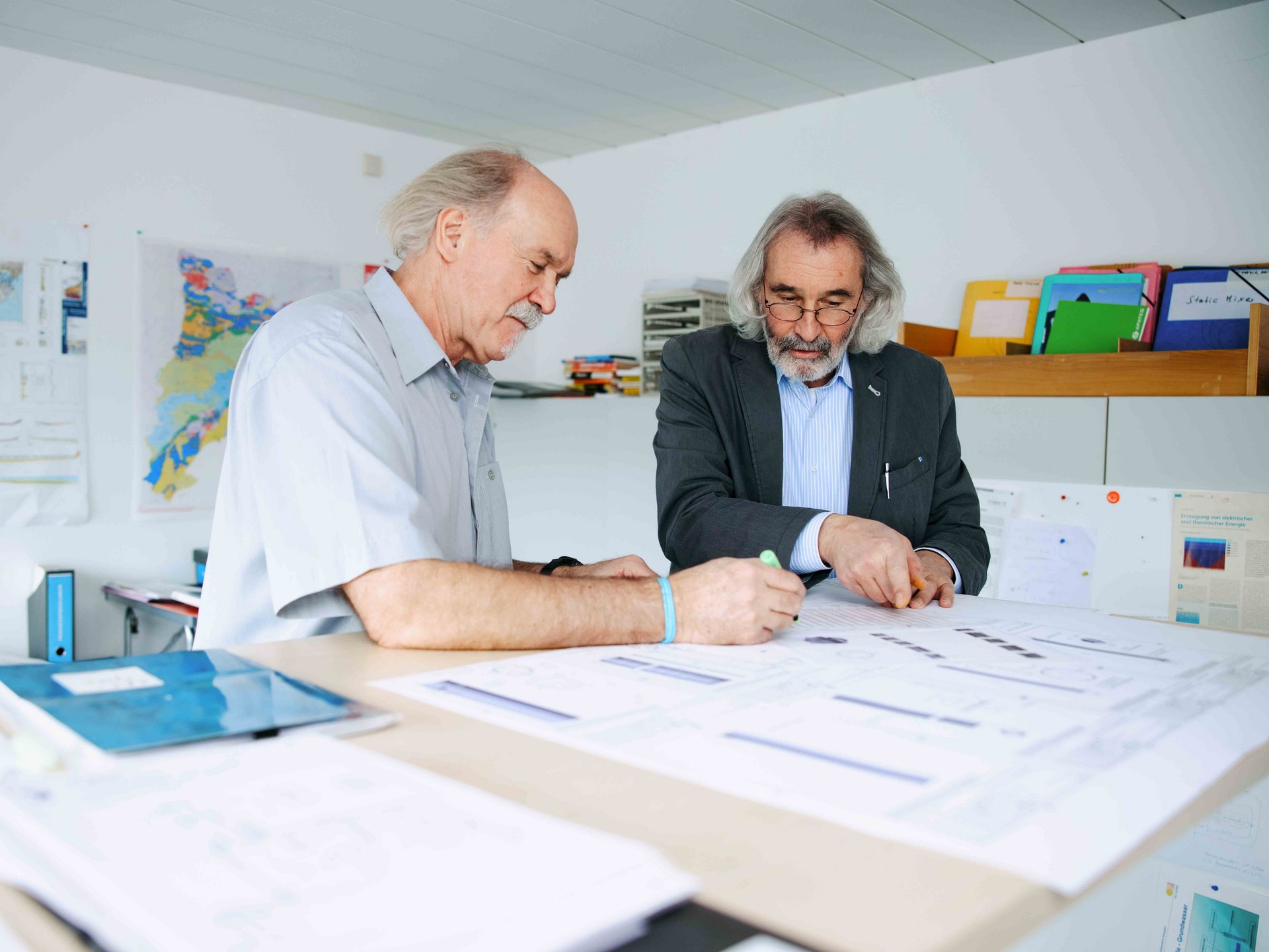Soil Vapour Extraction
IEG uses an innovative type of Soil Vapor Extraction system using a specially engineered and patented Double-Cased Screen(DMF) in combination with a very low negative pressure blower. The double-cased screen consists of fine-grained filter granules sandwiched between two layers of metal sieve web with an open screened area of over 50%. The metal web is constructed so that an artificial well pack cannot significantly reduce the open screened area. Air/water phase separation takes place in the DMF in order to avoid drying of the subsurface. By accurately positioning the DMF it is possible to obtain the necessary air-lift velocity to remove dense soil air charged with contaminants from the bottom of the well. Since contaminant concentrations often reach a maximum within the capillary zone, the Double-Cased Screen is normally placed within this area.
Advantages
- The IEG VVE system can be operated in clay and silt with a low hydraulic conductivity
- The system needs less energy and less maintenance than traditional systems and increases in the percentage removal of vapour phase pollutants from the subsoil


Vacuum Liquid Recovery
Vacuum-Enhanced Liquid Recovery (IEG VLR) process is an innovative technology underpinned by a detailed knowledge of how hydrocarbons actually behave in the subsurface. Using IEG VLR maximum recovery of free-phase product floating on top of the groundwater can be achieved quickly and cost effectively using a specially adapted well that is screened above the groundwater surface combined with one of several possible hydrocarbon phase recovery system.
Advantages
- Free product recovery efficiency is greatly increased.
- No draw-down of the groundwater level.
- No expensive separation of oil and water mixed with air.
- System can be easily converted to a bioventing system for enhanced simultaneous microbiological degradation.
Activated Carbon Units
IEG's specially designed Granular Activated Carbon recovery systems (IEG GAC-Sorb) provide superior adsorption capacity due to an innovative system for the distribution of volatile organic compounds (VOCs) from contaminated off-gas. Highly efficient in design and effective in operation, the largest of the systems, the 3000 litre, is capable of receiving and treating up to a maximum of 2300 m3/h of highly contaminated air, with a contaminant loading of up to 350 kg.
Advantages:
- Simple, modular construction design,
- Simple, modular construction design, adapted for IEG remediation euquipment.
- Self-contained system in HDPE enclosure.
- Integrated gas distribution for optimized adsorption.

Coaxial Groundwater Circulation
IEG Coaxial Groundwater Circulation Sparging (IEG CGC-Sparge) is a combination technique which is used for the effective remediation of shallow aquifers and perched groundwaters which are contaminated with a range of volatile organic substances, including petroleum hydrocarbons and solvents.
Advantages
- No Mineral Precipitation
- Guaranteed Directional Control
- High Pressure Drawbacks
Compact Vacuum Stripper
IEG's Compact Vacuum Stripper (IEG CVS 1000) is an innovative system for the removal of volatile organic compounds (VOCs) from contaminated groundwater. Highly efficient in its design and effective in operation, the system is capable of receiving and treating up to a maximum of 15 m³ /h of highly contaminated water, with a VOC removal efficiency of up to 99.5%.
Advantages
- Simple, modular construction design; can be retrofitted to existing extraction systems.
- Low profile system, no tower packing required.
- Self-contained skid-mounted system complete with control panel and hook-ups.


Multilevel Sampling Well (MLSW)
The IEG MLSW system is used to obtain undisturbed high-quality samples of soil gas and groundwater from numerous isolated horizons in a single standard borehole. The system is also used to accurately delineate contamination profiles in three dimensions, which is vital for the design, installation and monitoring of a remediation project. Specifically, the MLSW can be used to identify areas of very little or no contamination, or to pinpoint the top or base of a plume, whilst simultaneously facilitating the accurate determination of high levels of contamination in the unsaturated and saturated zones, as well as the often highly-contaminated capillary fringe.
Groundwater Circulation Well – IEG-GCW®
The IEG Groundwater Circulation Well (IEG-GCW®) process is an in-situ system for the remediation of contaminated aquifers, especially those contaminated with volatile and semi-volatile hydrocarbons, using a combination of chemical, physical and biological processes.
One of the biggest advantages is that IEG-GCW® systems accelerate the natural biodegradation of organic compounds under aerobic or anaerobic conditions. The systems are specifically designed and configured to provide accelerated aerobic, enhanced anaerobic or sequential anaerobic/aerobic reactions.
Further information about Groundwater Circulation Well (IEG-GCW®) vs. Pump & Treat here.
Advantages
- No groundwater abstraction, no waste water, no effluent discharge fees.
- No drawdown of groundwater, no structural damage to existing buildings.

Contact
Dr. Eduard J. Alesi
+49(0)7335 96976-0
hello@ieg-technology.com



